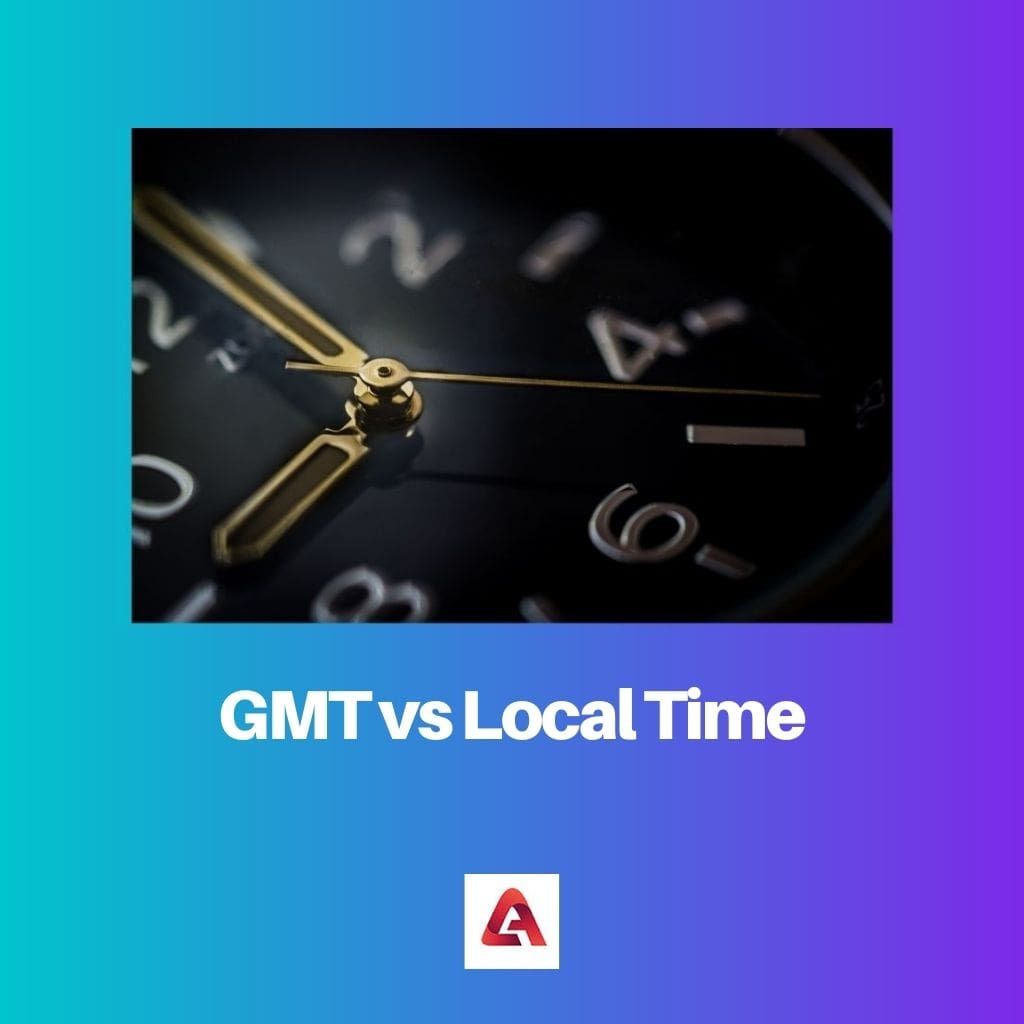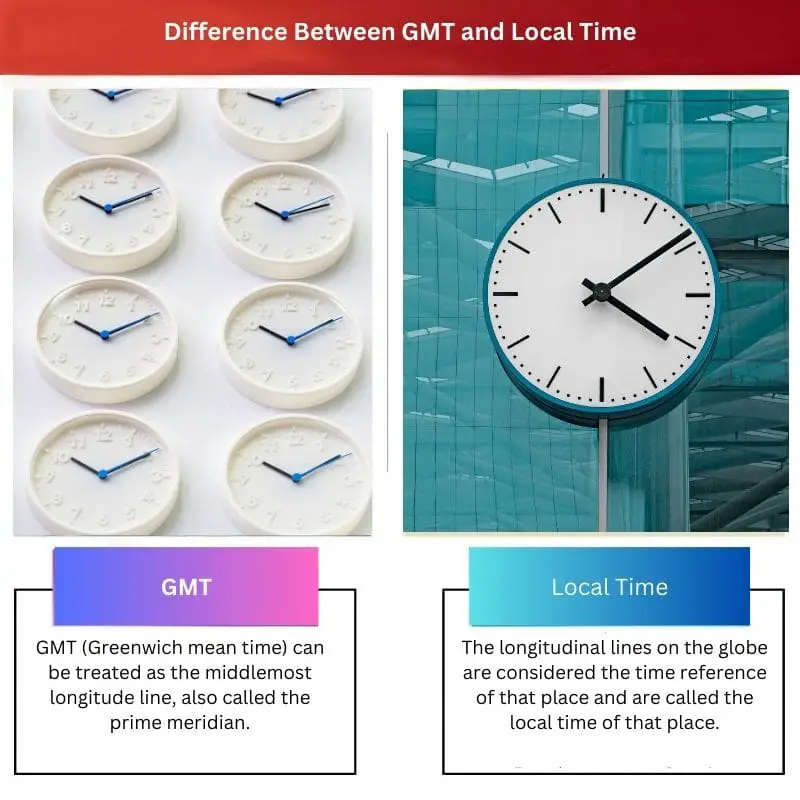It all started in the year 1800 when transport and communication services were becoming faster, and it was becoming more and more difficult to coordinate between locations which were too far away.
The longitude marked on the map of India has been considered the central longitude of India. This time is called IST (Indian Standard local Time) and passes from Allahabad to Uttar Pradesh.
Key Takeaways
- GMT is the mean solar time at the Royal Observatory in Greenwich, London, while local time is in a specific location.
- GMT is a universal standard for coordinating time across different time zones, while local time is specific to a particular location.
- GMT is the reference point for calculating time differences between different time zones, while local time is used for day-to-day activities in a particular location.
GMT vs Local Time
Greenwich Mean Time (GMT) is the mean solar time at the Royal Observatory in Greenwich, London, and is used as a time reference for various purposes, including timekeeping and aviation. Local time, on the other hand, is the specific time in the geographical area or time zone where a person lives.

Comparison Table
| Parameter of Comparison | GMT | Local Time |
|---|---|---|
| Implication | GMT (Greenwich mean time) can be treated as the middlemost longitude line, also called the prime meridian. | The longitudinal lines on the globe are considered the time reference of that place and are called the local time of that place. |
| Importance | Greenwich is located on the Prime Meridian, which decides the time lag for other countries. | It solves the problem of the time lag between different countries. |
| Main features | Earth was divided into 24 different time zones. The countries on the right of the Prime meridian are considered ahead in time, and lands on the left are considered behind the time. | One day is the time passed between two peak positions of the sun. The longitudinal lines represent the local time. |
| History | GMT was created in 1884 when 26 countries met on time lag. Greenwich royal observatory was considered the point of reference. | As when GMT was created, local time was also created. There are 23 more local time zones apart from GMT. |
| Advantages | We can quickly tell the exact time in other countries with the help of GMT because it is located on the prime meridian. | Establishes the basis of time in different parts of the globe far away. |
What is GMT?
The complete form of GMT is Greenwich Mean Time. Greenwich is a royal laboratory located in London that passes through the global Prime Meridian.
A total of 24 different time zones were created in 1884 in a meeting with 26 different countries in Washington, D.C. All other 23 (Local time zones) were referenced accordingly with the Prime meridian.
There is a difference of 15o in each successive time zones, and the farther the longitude is from the prime meridian, the more the local time of that place is ahead or behind the GMT.
The countries on the right of the prime meridian are ahead of GMT, and the countries on the left of the prime meridian are behind GMT.

What is Local Time?
With the creation of GMT, the other 23 local time zones were also created. On the globe, there are a total of 24 imaginary longitudinal lines representing the basis of time in different parts of the world. In theory, one day is the time passed between two peak positions of the sun.
Every longitude line is 15o apart from each other, and for every 150, there is a time lag of two hours.
The farther the longitudinal line is from the prime meridian, the more there will be a time gap between the GMT and that time zone.

Main Differences Between GMT and Local Time
- The main difference between GMT and local time is that GMT is used for places near London, whereas local time is the time zone at 23 different longitudinal lines.
- GMT is located at the prime meridian on the globe, but on the other hand, local time is determined by the time represented by the longitudinal lines present on the globe.




